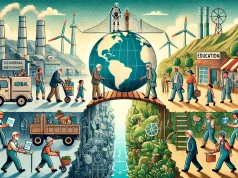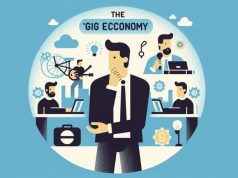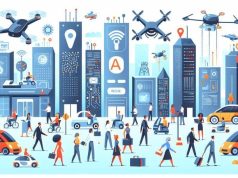As the workforce ages, it’s becoming increasingly clear that the proverbial tide is changing. The narrative once dominated by millennials is now shifting to include a wave of experienced individuals who carry with them a wealth of knowledge and expertise. This ‘Silver Tsunami’—a term that defines the surge of baby boomers reaching and surpassing traditional retirement age—is reshaping the labor market and compelling companies to rethink their approach to age diversity in the workplace.
The demographic shift is evident. According to the U.S. Bureau of Labor Statistics, the participation rate of older workers has been steadily increasing. The reasons are manifold: financial necessity, a desire to stay active, and a changing outlook on retirement. What does this mean for companies within various industries? The implications are both challenging and promising.
**Challenges: Employers need to confront and address issues of ageism and the digital divide that can alienate older employees. Age discrimination can manifest in hiring practices, professional development opportunities, and workplace culture. On the other hand, the digital divide reflects the varying degrees of technological proficiency between younger and older workers, which can lead to disparities in performance and inclusion.
**Opportunities: By recognizing the value of an aging workforce, companies can harness the benefits of experience, reliability, and a strong work ethic that often come with seasoned employees. Older workers can offer mentorship, providing an invaluable transfer of skills and knowledge to the younger generation. This mentorship can serve as a catalyst for innovation, as it bridges diverse perspectives and approaches.
So how can organizations adapt? Forward-thinking companies are already implementing strategies to create an inclusive environment that fosters productivity and innovation across all age groups.
1. Lifelong Learning: By prioritizing continuous education and training, employers can equip all workers, regardless of age, with current skills, thus narrowing the digital divide and promoting a culture of growth.
2. Flexible Work Arrangements: Flexibility in work schedules and locations appeals to older employees who may be balancing work with personal commitments or health considerations. This adaptability can also improve work-life balance for the entire workforce.
3. Inclusive Culture: Creating a workplace that values and supports workers of all ages can reduce ageism. This includes recognizing biases and promoting policies that support fairness and equity.
4. Health and Wellness Programs: Tailored health initiatives can address the specific needs of older employees, promoting longevity and reducing absenteeism.
5. Job Redesign: Adjusting job roles to match the changing physical capabilities of older workers can help maintain high levels of productivity without sacrificing well-being.
The ‘Silver Tsunami’ is not just a challenge; it’s a bold opportunity for companies to diversify their talent pool, encourage cross-generational collaboration, and disrupt the status quo by valuing wisdom as much as youthfulness. The Work Times readers are well-positioned to lead the way in embracing an aging workforce, fostering environments where experience is an asset, and innovation is ageless.
In conclusion, the rise of the aging workforce is a multi-dimensional issue that requires an approach grounded in understanding, flexibility, and innovation. Companies that proactively engage with this demographic shift will not only benefit from the rich experience of their older employees but will also set a precedent for a dynamic, inclusive, and productive future workplace.



























